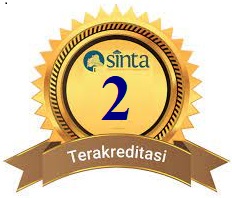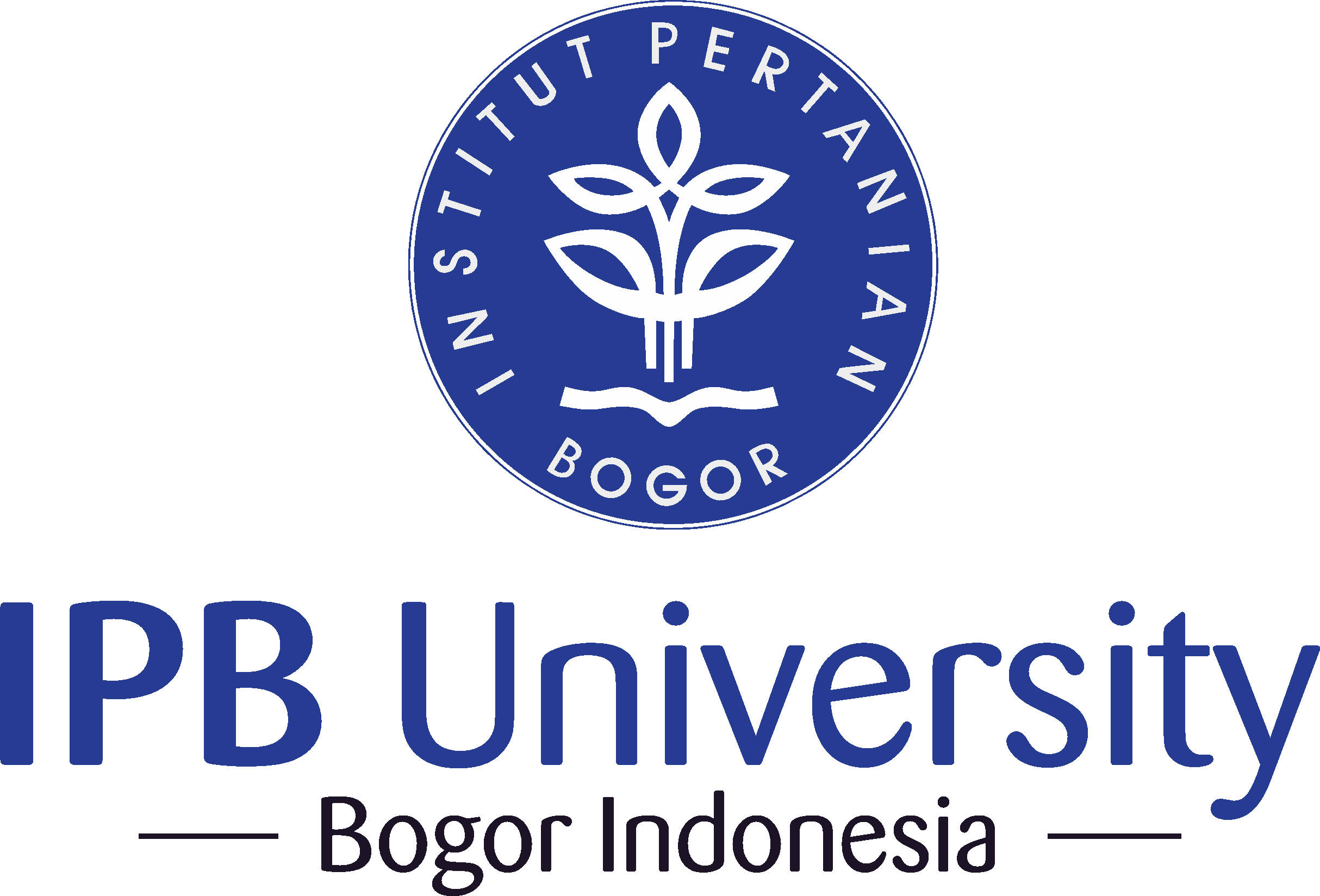Validasi Metode Analisis Kolesterol dalam Telur dengan HPLC-ELSD
Abstract
A method using high-performance liquid chomatography (HPLC) coupled with an evaporative light-scattering detector (ELSD) for the determination of cholesterol in egg was validated. A silica column and a binary mixture of hexane and isopropanol (90:10) as a mobile phase were used to separate cholesterol. Cholesterol was detected at 1.5 min using cholesterol standard and HPLC-ELSD condition: evaporation temperature 50 ºC, air pressure 2.2 bars, and flow rate of mobile phase 2 mL/min. A method linearity for the cholesterol analysis in egg as a sample matrix was obtained at a range of 50 to 3000 µg/g sample, with R2>0.990. Instrument detection limit and limit of quantitation were determined at 1.07 and 3.56 µg/mL, respectively. Recovery test results by spiking cholesterol standard in egg sample at low, medium, and high concentrations (50, 250 and 3000 µg/g ) were 122.13, 108.23, and 44.71%, respectively. Their corresponding repeatability values were 5.26, 4.29, and 10.11%. Method detection limit and intralab reproducibility (to analyze a sample) were observed at 2.30 µg/g and 0.04%. The method is valid for cholesterol analysis in egg at low and medium concentrations.
Downloads
References
Avalli A, Contarini G. 2005. Determination of phospholipids in dairy products by SPE/HPLC/ELSD. J. Chromatogr A. 1071(1-20): 185−190.
[EMA] The European Agency for the Evaluation of Medical Products. 1995. ICH. Topic Q2B. Validation of Analytical Procedures: Methodology. [Internet] [diunduh 2010 Nov 2]. Tersedia pada: http://www.pharmacontract. ch/support/pdf-support/Q2a.pdf.
[EURACHEM] Working Group. 1998. The Fitness for Purpose of Analytical Methods –A Laboratory Guide to Methods Validation and related Topics. [Internet] [diunduh 2010 Nov 2]. Tersedia pada: http://www.eurachem.org/index. php/publications/guides/mv.
FDA. 2012. Guidelines for the Validation of Chemical Methods for the FDA Foods Program. [Internet] [diunduh 2013 Jan 30]. Tersedia pada: http://www.fda.gov/downloads/ScienceResearch/FieldScience/UCM298730.pdf.
Ference BA, Yoo W, Alesh I, Mahajan N, Mirowska KK, Mewada A, Kahn J, Afonso L, Williams KA, Flack JM. 2012. Effect of long-term exposure to lower low-density lipoprotein cholesterol beginning early in life on the risk of coronary heart desease: A Mendelian randomization analysis. Journal of the American College of Cardiology. 60(25): 2631−2639.
Hadi A. 2007. Pemahaman dan Penerapan ISO/IEC 17025:2005. Jakarta (ID): Gramedia Pustaka Utama.
Harmita. 2004. Petunjuk pelaksanaan validasi metode dan perhitungannya. Maj Il Kefarm. 1(3): 117−135.
Huber L. 2001. Validation of Analytical Methods. [Internet] [diunduh 2010 Okt 8]. Tersedia pada: www.labcompliance.com.
[JECFA] Joint Expert Committee on Food Additives. 2006. Combined Compendium of Food Additive Specifications Volume 4. Analytical Methods, Test Procedures and Laboratory Solutions Used By And Referenced in The Food Additive Specifications. Rome (IT): Food and Agriculture Organization of The United Nations.
Letter WS. 1992. A Rapid Method for Phospholipid Class Separation by HPLC using an Evaporative Light-Scattering Detector. J Liquid Chromatogr. 15(2): 253−266.
Min DB, Steenson DF. 1998. Crude fat analysis. Dalam: Food Analysis . Ed. Ke-3. SS. Nielsen (ed). Maryland (US): Aspen Publ.
Osman H, Chin YK. 2006. Comparative sensitivities of cholesterol analysis using GC, HPLC and spectrophotometric methods. The Malay J Anal Sci. 10(2): 205−210.
Sullivan DM, Carpenter DE. 1993. Methods of analysis for nutrition labeling. Chapter 11, AOAC Official Method 976.26, Cholesterol in Multicomponent Foods, hlm. 177-181.
USDA. 2011. Cholesterol High Avoid. [Internet] [Diunduh 2011 Feb 10]. Tersedia pada: http: www.dietaryfiberfood.com/cholesterol_high_avoid.php.
This journal is published under the terms of the Creative Commons Attribution-NonCommercial 4.0 International License. Authors who publish with this journal agree to the following terms: Authors retain copyright and grant the journal right of first publication with the work simultaneously licensed under a Creative Commons Attribution-NonCommercial 4.0 International License. Attribution — You must give appropriate credit, provide a link to the license, and indicate if changes were made. You may do so in any reasonable manner, but not in any way that suggests the licensor endorses you or your use. NonCommercial — You may not use the material for commercial purposes.



















